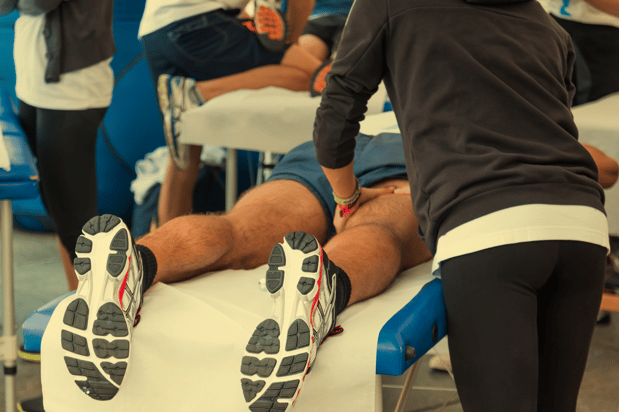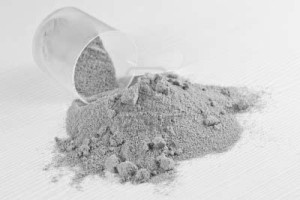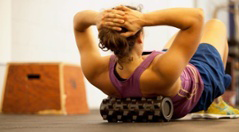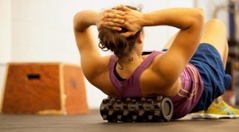Take Your Shot at Greatness: Recovery

Recovery is one aspect of sports that separates the elite athletes from the rest. The best athletes dedicate time and attention to their recovery, not just in the minutes following competition or training but also in the other 20+ hours of the day. Proper recovery demands a multifaceted approach ranging from the passive components like sleep and stretching to active components of rehydration, refueling, and foam rolling. To be successful, you must treat your recovery with the same attitude as in training: set goals and be consistent. Let’s touch on the primary pillars of recovery that you’ll use to hit peak performance day after day.

- Post-Workout Nutrition
While we’ll cover nutrition in the next chapter, post-workout re-fueling is so essential to recovery that we’re putting it first on our list. The easiest action item in recovery is also the easiest one to miss the mark on. There is only a 30-minute time frame after your workout in which to refuel. Either liquids or solids are sufficient—what’s most important is the timing and the breakdown of your energy sources. In the first 30 minutes following exertion, the glucose and protein you ingest is preferentially delivered to the muscles that have just been worked. The duration and intensity of elite training is enough to deplete your energy reserves in muscle tissue, known as glycogen. Exercise triggers cells within your muscle tissue to open the gate for glucose to enter and replenish the cell, but this gate only stays open for about 30 minutes after the completion of your exercise. This phenomenon is known as the “window of opportunity” in elite athletics. If you wait until later to re-fuel, the glucose will be distributed nonspecifically within the body and will no longer be preferentially picked up by muscle tissue. Protein degradation may also occur if you miss the 30-minute mark, meaning that your muscle tissue will break down instead of build up post-workout. If you ingest protein post-workout, the bulk of your protein synthesis will occur in the subsequent 3 hours, peaking around 45-90 minutes before dropping back to baseline.
What should you re-fuel with? Our bodies require a combination of protein and carbs for maximal replenishment. Carbohydrates stimulate the release of insulin from the pancreas; insulin helps shuttle sugar from your bloodstream into your body tissues, but it also maximizes your protein synthesis. Research suggests refueling with a 4:1 or 3:1 ratio of carbohydrates to protein for endurance athletes who are focused on building lean muscle mass. For example, low fat chocolate milk has a 4:1 ratio. Protein bars and powders with a higher protein value may saturate your daily protein needs. To be a smart consumer, learn how much protein your body requires. 1.5 g protein/kg body weight is a good rule of thumb, meaning a 150 lb athlete should average 100g protein per day to preserve lean muscle mass. As a reference, the recommended dietary allowance for an average non-athlete is 0.8g/kg. For more nutritional information please refer to Chapter 8 and our BridgeBlog.

- Foam Rolling
One of the hardest aspects of training is maintaining one’s range of motion throughout a difficult week of workouts. By the time Saturday rolls around, stiff muscles may limit your ability to move through exercises with proper technique. Use a foam roller at regular intervals throughout the week to lengthen your muscle tissue. In training, fascia adheres to muscle tissue, causing pain, stiffness, and reduced circulation. Myofascial release is simply the application of traction to fascia to release it from the muscles it surrounds. Foam rolling induces myofascial release using your own bodyweight gliding along a roller; this effect can also be achieved with massages that are both less frequent and more expensive. In a study in the Journal of Strength and Conditioning, post-exercise fatigue was lower in athletes who foam rolled prior to the athletic test compared to athletes who conducted planking exercises beforehand. When fascia is allowed to release from muscle, much like opening a vacuum-sealed bag, there is more room for waste removal (lactate clearance) and oxygen delivery while the muscle itself begins to relax. Another study found that range of motion around the knee joint improved by up to 10 degrees following two one-minute trials of foam rolling the quadriceps compared to no foam rolling. The greatest part of foam rolling is that it can be beneficial anytime throughout your training schedule.

- Hydration
Our bodies lose fluid throughout the day in the form of sweat, urine, and exhaled water vapor. Dehydration can occur at any time, but it is exceptionally prominent post workout. Even a 1-2% loss of bodyweight in the form of fluid causes cognitive changes such as increased irritability, difficulty concentrating, and increased sense of fatigue. Such a perceptibly small loss in water content can diminish your performance capacity by up to 45%. Most athletes lose 27-48 ounces of fluid per hour, excluding hot, dry, or high altitude conditions. A 150 lb athlete will thus be in the 1-2% range shortly after an hour upon losing 60 ounces. Replenish during workout and post workout with a combination of water and electrolytes. Electrolytes are positive or negative charged ions that conduct electrical activity and help maintain fluid balance, muscle contractility, and neural activity. Water follows electrolytes by osmosis; when you sweat, you end up losing both. When replacing fluid, use beverages that contain sodium and chloride. Potassium, magnesium, and calcium are also good to replenish but play a smaller role than sodium does. Rehydration with a sodium-glucose beverage will help you retain more water in your body for the same reason that a loss of electrolyte enhances water loss. For a workout less than 2 hours, 60-120 mg sodium and 15-45 mg potassium per 8 oz of fluid will be effective, increasing to 180-250 mg sodium and 10-100 mg potassium for ultra-endurance athletes or longer workouts. The range is due to variation between athletes in body weight and electrolyte content of their sweat. Electrolytes come in tablets, powders, gels, chews, blended sports drinks, table salt, and food. Powder mixes allow you to control the ratio of salt:sugar:fluid. Endurance athletes may prefer tablets or chews to maximize salt intake while minimizing liquid intake.
- Ice Baths
Ice baths as a recovery tool remain controversial in the research community. Some athletes prefer ice baths while others prefer contrast bathing (hot and cold). Try ice bathing post-workout during a heavy week of training and see if it’s helpful to you. The colder temperature is meant to reduce inflammation, especially in joints that undergo high repetition of motion. When your body experiences cold temperature, peripheral vasoconstriction of your extremities occurs, sending blood closer to your core (and heart) to maintain warmth. Upon exiting the cold bath, blood circulates faster through your extremities, increasing the rate of oxygen and nutrient exchange in the muscle tissue and removing waste, including lactate. Accelerated circulation thus accelerates lactate clearance. Stay in the ice bath for a maximum of 12 minutes, and if you submerge further to the level of your shoulders, 8 minutes is sufficient. For more information regarding this topic, refer to the BridgeBlog on Ice Baths.
- Compression Gear
Athletes use compression gear to take advantage of circulation in a similar manner to how ice baths work. Instead of causing vasoconstriction due to cold temperatures, compression gear mechanically constricts blood vessels in the extremities to promote venous return of blood to the heart. This inhibits pooling of blood in the extremities and prompts more efficient removal of waste product.
Takeaways
Recovery is about the series of choices you make when you step out of practice. You have a multitude of strategies to take advantage of, from what you drink to what you wear, and countless workouts to try them out on. Not all athletes use the same recovery techniques, but learning how to take care of your body is the first step to maximizing what works for you.
References:
- Med Sport Sci.2012;59:127-34. doi: 10.1159/000341954. Epub 2012 Oct 15. Chocolate milk: a post-exercise recovery beverage for endurance sports. Pritchett K1, Pritchett R.
- Effect of glucose supplement timing on protein metabolism after resistance training B. D. Roy 1, M. A. Tarnopolsky 1,2, J. D. Macdougall 1, J. Fowles 1, and K. E. Yarasheski 3 Journal of Applied PhysiologyJune 1, 1997 vol. 82 no. 61882-1888
- The effects of protein and amino acid supplementation on performance and training adaptations during ten weeks of resistance training. Kerksick CM, J Strength Cond Res. 2006 Aug;20(3):643-53.
- Hoffman J, Ratamess N, Tranchina C, Rashti S, Faigenbaum A. Effect of protein-supplement timing on strength, power, and body-composition changes in resistance-trained men. Int J Sport Nutr Exerc Metab. 2009;19(2):172–185.
- J Strength Cond Res. 2014 Jan;28(1):61-8. doi: 10.1519/JSC.0b013e3182956569.
The effects of myofascial release with foam rolling on performance.
Healey KC, Hatfield DL, Blanpied P, Dorfman LR, Riebe D. - J Strength Cond Res. 2013 Mar;27(3):812-21. doi: 10.1519/JSC.0b013e31825c2bc1.
An acute bout of self-myofascial release increases range of motion without a subsequent decrease in muscle activation or force.
MacDonald GZ, Penney MD, Mullaley ME, Cuconato AL, Drake CD, Behm DG, Button DC. - Sawka, Young, Cardarette, et al. 1985 http://www.humankinetics.com/excerpts/excerpts/dehydration-and-its-effects-on-performance
- http://www.cp12.org/blog/index.php/2013/06/06/chronicdehydration-are-we-thirstier-than-we-thing/
- http://beta.active.com/nutrition/articles/cracking-the-code-on-sweat-rates
Related Posts

The Best Bench Press Variation You’re...
This post is part of our Coaches Corner series with Taylor Rimmer. Taylor is NSCA-CPT, StrongFirst...

Does Powerlifting Harm Heart Health?
A recent study has discovered that a 12-week supervised strength training program (SSTP) may result...

Barefoot Running: Is It For You? |...
Run Free: Consider Less Cushion
Updated October 2020:
With more athletes looking for ways to...
.png?width=150&height=50&name=BRIDGEBLOG(1).png)


